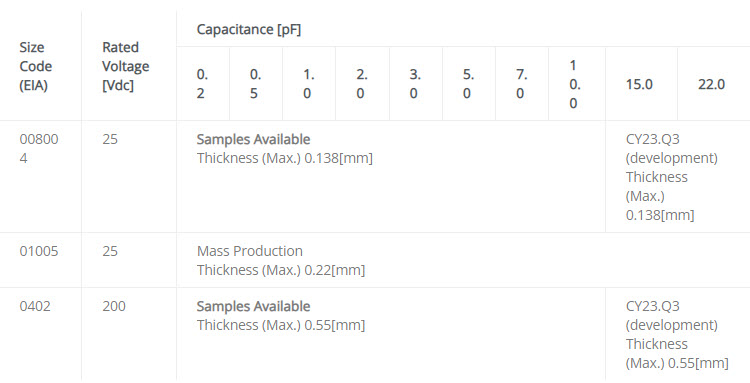Kyocera has recently introduced an industry-leading miniature High-Q Multilayer Ceramic Capacitor (MLCC) in the 008004 (EIA) size, utilizing copper (Cu) as the internal electrode to achieve a superior Q factor. This development marks a significant advancement in capacitor technology, particularly for power amplifier (PA) modules used in smartphones and 5G base stations.
Key Features
- Superior Q Factor: The incorporation of copper as the internal electrode material enhances the Q factor compared to conventional products. A higher Q factor indicates lower energy loss, which is crucial for efficient performance in high-frequency applications.
- Miniaturization: The 008004 (EIA) case size represents a significant reduction in component size, supporting the trend toward miniaturization in electronic devices. This compact form factor allows for more efficient use of space within PA modules, contributing to the development of smaller and more powerful electronic devices.
- Low Loss Characteristics: The MLCC’s low loss characteristics contribute to energy savings in mobile devices by minimizing energy dissipation during operation. This efficiency is particularly beneficial in applications where power consumption is a critical concern.
Applications
Kyocera’s miniature High-Q MLCC is specifically designed for use in PA modules, which are integral components in devices such as smartphones and 5G base stations. The enhanced performance characteristics of this capacitor make it well-suited to meet the demanding requirements of high-frequency communication systems.
Roadmap and availability
Kyocera is expanding its lineup of miniature MLCCs to support a variety of applications. For smartphones, the lineup starts from the 008004 (EIA) size, while for 5G base stations, it begins from the 0402 (EIA) size. Samples of the 008004 size with a rated voltage of 25 Vdc and various capacitance values are available, with mass production planned for the third quarter of 2023.
In summary, Kyocera’s development of the miniature High-Q MLCC represents a significant advancement in capacitor technology, offering superior performance in a compact form factor. This innovation is poised to play a crucial role in the advancement of high-frequency communication devices, aligning with the ongoing trends of miniaturization and enhanced efficiency in the electronics industry.


